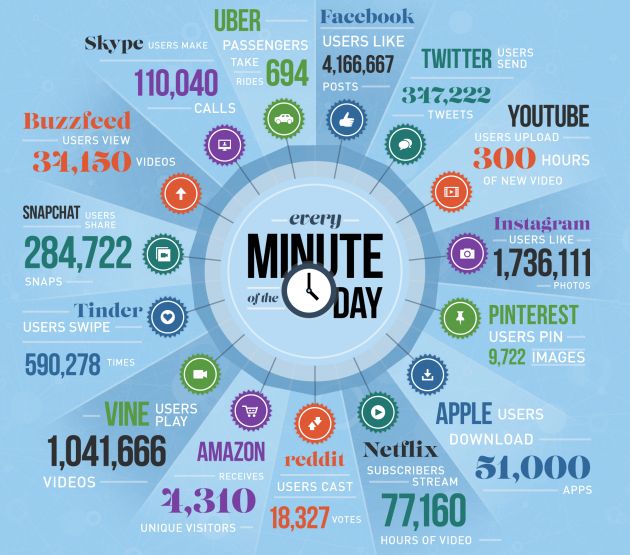1. What are the five main markets for IoT?
The Internet of Things (IoT) is accelerating at an impressive speed, forecasters predict 25 billion devices will be online by 2020, creating over $300 billion in opportunities for companies involved1.
Even with this considerable growth coming in the next five years, most enterprise folks still don’t understand or aren’t invested in the IoT revolution. Management consulting firm Bain & Company believe that’s due to misrepresentation on the definition of IoT. [Continue reading..]
2. What’s trending in the IoT space
Our team has been active as investors in the Internet of Things and hardware space over the past two years. We have read pitches from hundreds of companies, met with dozens, read hundreds of research reports and spoken with various experts. We have invested in six IoT/hardware companies from our global seed fund and seven from our startup accelerator.
With this accumulated knowledge, we decided to create an easy to read overview for others to get up to speed on this trending space of IoT. Here is our full report; the following is a summary of what we learned. [Continue reading..]
3. Here’s how the Internet of Things will explode by 2020
The Internet of Things (IoT) has been labeled as “the next Industrial Revolution” because of the way it will change the way people live, work, entertain, and travel, as well as how governments and businesses interact with the world.
In fact, the revolution is already starting.
That brand new car that comes preloaded with a bunch of apps? Internet of Things. Those smart home devices that let you control the thermostat and play music with a few words? Internet of Things. That fitness tracker on your wrist that lets you tell your friends and family how your exercise is going? You get the point.
But this is just the beginning. [Continue reading..]
4. Eight Data And Analytics Capabilities You’ll Need For The IoT
There is widespread agreement that the Internet of Things will be a transformative factor in the business use of information. The prospect of billions of connected devices promises to transform home activities, transportation, industrial operations, and many other aspects of our lives.
The bad news about the IoT is that we have a lot of work to do before we are ready for it. We’ve got to up our games considerably with regard to data management and analytics if we’re going to capture, store, access and analyze all the IoT data that will be flowing around the Internet. The good news (in addition to its potential) is that most organizations have a few years to get better at these capabilities before the real onslaught hits. The sensor devices, IoT data standards, and data management platforms are still in their relatively early stages, and no customer, business partner, or CEO could reasonably expect that you could tame all that IoT data today. [Continue reading..]
5. How does the IoT Evolve? In Fits and Starts
It has been quite a week for IoT in the news. The shutting down of Revolv by Nest became a major news item, covered by everyone from Fortune, CNET, Computerworld, NBC, and Yahoo just to name a few.
As usual, Stacy Higginbotham did a nice job in writing about what could have been done instead to make this all easier.
As background – Revolv was a small start-up in Boulder, Colorado. I know a lot about the team there, and like them a lot, so I admit to some bias up front. They built a smart home hub with seven radios to speak to 10 of the most popular smart home protocols. [Continue reading..]
6. What’s the Connection Between IoT and DevOps?
DevOps is the automation of Agile, using tools and processes that remove the traditional latency from application development. DevOps transformations are systemic to both enterprises and ISVs that I work with these days. Everyone now knows that it’s critical to make the best use of cloud computing, big data, and, now, the Internet of Things (IoT). [Continue reading..]
7. Will IoT Lock Down Your House Or Open The Door To Hackers?
Imagine a time when the transfer of data is fast and seamless, or a world where you control your devices without moving a finger. IoT, or the Internet of Things, looks to push that envelope of convenience and efficiency. IoT devices are becoming increasingly popular among homeowners seeking to make their homes automated and their day-to-day tasks easier. [Continue reading..]
8. New Business Drives Hitachi’s Internet of Things Strategy
We can now count Hitachi among the list of companies that has formed a division to specifically target the Internet of Things (IoT). This is a move that many automation suppliers are finding necessary as they try to better manage the technologies and expertise needed to capture this important market. [Continue reading..]
9. How Internet of Things Customer Data Will Forever Change Marketers’ Jobs
When a mobile app asks you to share personal data with a company, what do you do?
It probably depends on what you expect to get in return. That’s the new data economy consumers and brands are dealing with today: Companies want good user data, and users want good products and experiences. [Continue reading..]
10. How Silicon Valley is botching IoT
The “Internet of things” has been a Silicon Valley buzzword for the last few years, so it’s ironic that we seem to read almost as much tech news coverage about Internet of things hacking. In recent months, for example, VentureBeat has reported that the FBI is warning car makers and owners about vehicle hacking risks, and that IoT devices may be exploited as Trojan horses. And just a few days ago, we heard about a glitch at smart doorbell company Ring that exposed videos of users’ homes to other users. [Continue reading..]
